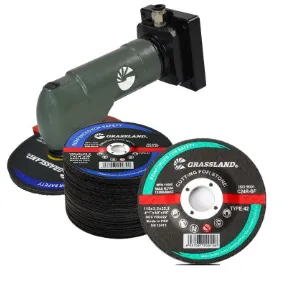

Building trustworthiness in industrial settings with this tool pivots around the maintenance of the disc itself. A worn disc can affect work quality and potentially endanger operators. Regular inspections for damage, alongside balancing checks, are crucial. I learned this during a session where an unnoticed flaw in the disc led to vibrations, impacting the precision of cuts and leading to an irreparable workpiece. Notably, while the utility of a 9-inch grinding disc is undeniable, it is the nuances in its application that amplify its effectiveness. Whether it’s understanding the bond material—resin bond for aggressive grinding or vitrified for longevity—or determining the disc’s optimal RPM (Revolutions Per Minute), each contributes to a refined craftsmanship level. In terms of environmental sustainability, the usage of such discs demands a mindful approach to waste management. There's an increasing push, especially in large industries, towards recycling metal shavings—a practice I’ve observed that not only reduces wastage but also contributes to a cost-efficient operation. Ensuring that discarded discs are properly disposed of reflects an environmental responsibility that all professionals need to adhere to nowadays. Simply put, the 9-inch metal grinding disc is an indispensable part of the metalworking industry. Its integration into projects, however, is not just about the tool itself but about the knowledge, skill, and careful consideration that accompanies its use. As with any reliable tool, the value delivered by the disc is intrinsically linked to the competency and respect of its handler towards the equipment and the project at hand. In my own experience, marrying the rugged utility of the grinding disc with conscientious craftsmanship has allowed for projects of unparalleled quality and safety. This is the hallmark of mastery; the relentless pursuit of excellence and the unwavering commitment to craftsmanship.
Post time:Jan - 30 - 2025

















